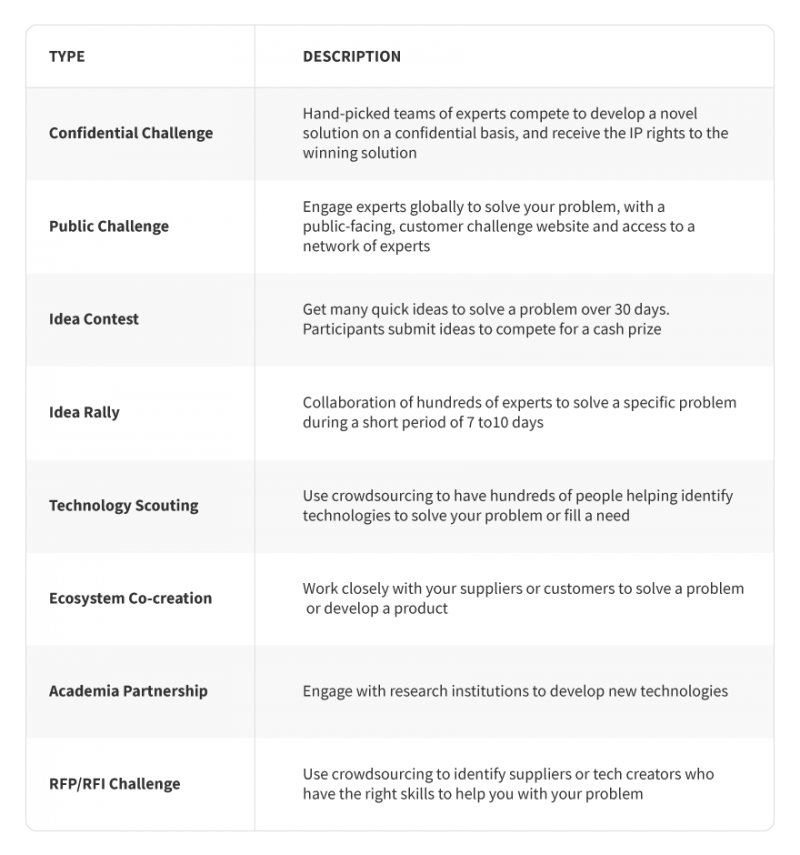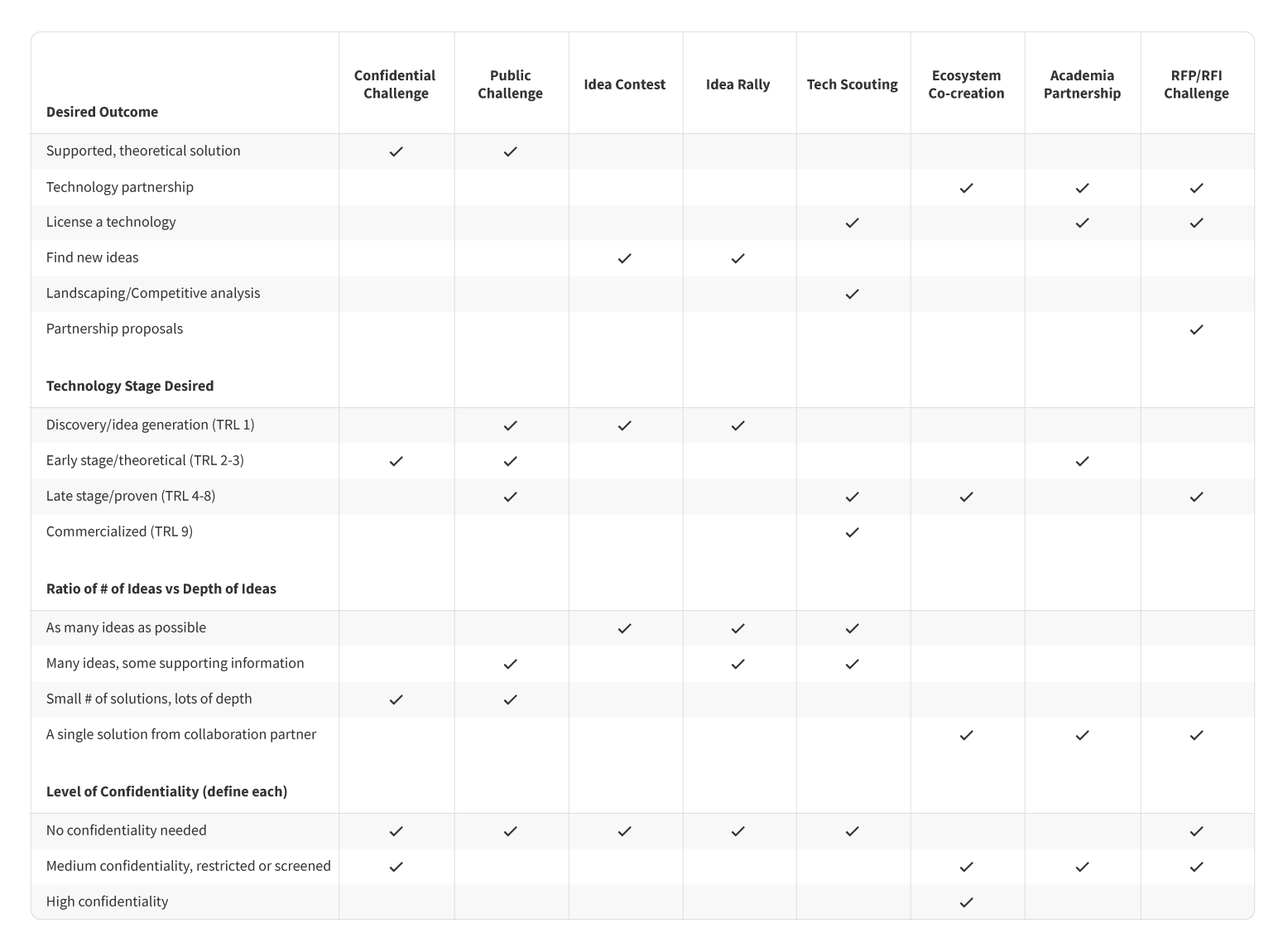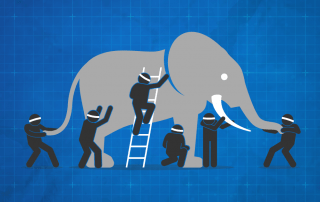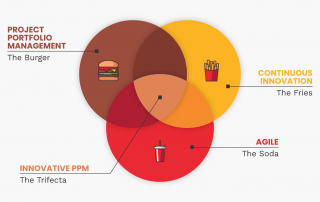The Next Paradigm Shift: From Agile to Future-Fit
This article received the 2021 Business Innovation Brief Most Valuable Post Award in the Innovation Mindsets category.
Good news is 2021 will be shorter since Earth is spinning faster and faster, scientists say. Bad news is the pace of technology advancements is speeding up exponentially, and it’s getting harder to stay in the game. Increasingly, organizations are facing immense pressure to stay hypervigilant, to be proactive, and to discover new ways to reinvent themselves. Further compounding this challenge are the unforeseen events of 2020; now, more and more executives are plagued with sleepless nights as their organization’s future spirals into the unknown.
Twenty years ago, the Agile Manifesto revolutionized the planning and execution of work. Twenty years later, many organizations still rely on this approach to develop the agility that allows them to turn on a dime, deliver results, and satisfy customers. However, our fast-moving world requires a fresh, modernized mindset — specifically one that builds on agile and enables organizations to proactively shape their future. This is what the Future-Fit Manifesto is all about. To adopt this mindset, organizations should start embracing the following four values:
Collaborative culture over individuals and interactions
Innovative systems over working software
Discovering opportunities over customer collaboration
Creating alternate futures over responding to change
It’s important to note that while there’s value in the items on the right, we should value the items on the left more.
These simple yet imperative values are the lifeblood of Future-Fit organizations. 2020 is the proof: organizations that were already embracing these values not only survived, but also thrived in the market. A lot has changed since, so much so that for many it feels like ten years went by in the last 12 months. The silver lining though is that we’re now on fertile ground for new ideas, new business models, and new practices.
Everyone is looking to become the next unicorn with that next big idea that will flip the market on its head. To make this dream a reality, organizations must start embracing a collaborative culture that involves all internal and external stakeholders to build intimate connections, to nurture engagement, and to encourage human-centric and innovation-led conversations. As we enter the age of innovation, the time is ripe to shape the future and own our destiny. The Future-Fit Manifesto proposes a new strategic approach and puts forth prevailing values and principles that empower organizations to explore new possibilities, to seek new frontiers, and to boldly create new futures.
Being a fast follower is no longer enough. You cannot imitate the next unicorn. Being predictive means an organization must lead its future in self-disruption, explore different opportunities constantly, and take a leap of faith to create the next paradigm shift.
Organizations need to rethink, reinvent, and refocus their systems to thrive in this new hyperdigital world, and the underlying processes have to be reimagined and rebuilt. Quick fixes that do not address the fundamental constraints of being truly digitally native will be only bolt-on solutions that constrain the adaptivity, creativity, and resilience required to be Future-Fit. In the art of the possible, it’s the growth mindset that rules.
More than ever before, organizations can ensure their core values and principles match the future they want to create. Let’s take a deeper look at the Future-Fit values, which build on Agile and establish a growth mindset that is paramount in the age of innovation:
Collaborative culture over individuals and interactions
Individuals and interactions offer limited future readiness as everyone follows agile processes. Future-Fit organizations foster a culture of collaboration that is built on trust and rewards creativity, learning, and success; this collaborative ethos is the foundation of sustainable and continuous innovation, as well as adaptability.
Innovative systems over working software
Working software focuses on getting a defined deliverable to a functional state. Future-Fit organizations also value building and improving an innovative system that constantly produces the desired solutions. Creating traceability from strategy to delivery enables organizations to be more adaptive and resilient by proactively responding to disruptions, new regulations, and unavoidable future evolutions.
Discovering opportunities over customer collaboration
Collaborating with customers on a deliverable is important but it provides a limited view of their immediate needs. Future-Fit organizations pursue a customer-obsession strategy by actively uncovering new opportunities based on emerging trends and technologies, and by listening to all feedback to delight stakeholders, build trusted relationships that last a lifetime, and create value.
Creating alternate futures over responding to change
Responding to change is not enough. Being a fast follower does not ensure resilience. Future-Fit organizations predict and anticipate possible scenarios, customer behavior, market needs and other elements not in their control to decide which business models and future states are most desirable. It is crucial to embrace growth strategies by taking advantage of any disruptions.
The nature of work, new technologies, emerging trends, best practices, and regulations are evolving exponentially and in unexpected ways. If the past two decades weren’t enough proof, then the last year alone reminded us that change doesn’t come knocking at our door: it bashes it down, leaving us little or no time at all to pivot accordingly.
Disruption comes in many ways, shapes, and forms, but the result is always the same: a shock to the system. Now, more than ever, organizations need to adopt a proactive mindset that empowers their employees, partners, and community to fearlessly navigate through turbulent times and into uncharted space at warp speed.
How Future-Fit is your organization? Use this free assessment tool to find out your organization’s level of future-fitness in 5 minutes.

Ludwig Melik
CEO at Planbox and author of the Future-Fit Manifesto. I help organizations build a sustainable culture of innovation. Follow me on Twitter or LinkedIn.
911, What Are Your Innovation Emergency OKRs?
There is a reason why firefighters say be fast or be last: they have 60 seconds or less to act before they have a major house fire on their hands.
A home can catch fire entirely in just 4 minutes. In the first 30 seconds, the fire erupts and begins to spread rapidly. In the next 3 minutes, the temperatures can reach 1100 degrees Fahrenheit, at which point a flashover can occur, and everything in the affected room can burst into flames. The oxygen is virtually sucked out and all the windows shatter. In the final minute, the fire can spread beyond the house and cause damage whatever is in its path.
This is how fast and furious disruption can feel to an ill-prepared company. Change can creep up at any time and in any form, for example, as a new provider that suddenly introduces an innovative solution or business model that renders yours instantly obsolete. This damage wreaks havoc not only on your organization but also on your organization’s supply chain. Much like the aftermath of a fire, there is not much to go back to. You are at a point of no return, where it becomes difficult, or even impossible, to resume business because too much time has been lost, and it is too late to act.
“In fire you can plan everything out to the minute, and a minute before that everything changes.” – Dan Felix
Corporate life expectancy is at an all-time low — down 300% since the 1980s — and expected to decrease even more in the coming years as analysts believe there may be more innovation in the next decade than in the last century. The opportunity is of historical proportions. However, the challenge is if today’s organizations will develop the necessary discipline and mindset to be tomorrow’s leaders. But why is it that an organization’s survival has become such a critical challenge?
Gather your clan, make a fire plan
Future-shaping the business while also running it is a lot easier than it sounds. Defining the right innovation Objectives and Key Results (OKRs) and Key Performance Indicators (KPIs) can determine factors that will help in this crusade. But a large majority of executives cannot track, justify, and account for their innovation investments. Simple and effective measures are the holy grail for innovators who constantly struggle to forecast the value generated from their actions. For many, decisions are often constrained and based on metrics related to specific individual initiatives or limited to a line of business. Some KPIs to consider are concept throughput, concept velocity, Innovation Forecasted Revenue/Cost savings, and other financial metrics.
An ounce of prevention is worth a pound of cure
There are regulations and significant consequences that force organizations to deliver concise financial statements and be accountable to their shareholders by producing total transparency for all material enterprise-wide transactions. These financial records are captured and summarized across the organization. Likewise, it has become evident that customer data can only be reliable and strategic if all related metrics are rationalized and viewed through a global lens that factors in and compiles all the related client data. Yet, Innovation, which is the lifeblood of the company, remains an island on its own. For most companies, there are no comprehensive OKRs for the organization as a whole and the structure to track the KPIs accordingly. The organization can catch fire, as it often does with ever declining corporate survival rates, and it will be too little, too late to act.
Fires that are small, soon will be tall
“The very worst fire plan is no plan. The next worse is two plans.” – Author Unknown
Current innovation measurement and accounting are a lot like the earliest systems for measurement from 3,000-4,000 BC, when the first instances of people using measurement standards emerged; however, there was no universal agreement. Many distinctive units of measurement were being used in different towns and regions. Trade led to the modernization and eventual harmonization of these measures. You cannot fireproof your organization holistically if you do not inspect possible hazards and leave yourself open to a key exposure that can cause a fire to break out and eventually damage the entire business. Just like the Age of Information established a system of record for financials, and the Age of Customer established a system of record for customers, then perhaps the Age of Innovation, alongside emerging standards such as ISO 56000, will usher in the new global standards of measurement for innovation.
Fire suppression strategy
When firefighters are called to action, they quickly move to assess the situation and devise the best strategy to extinguish the fire. Organizations do this by defining Innovation OKRs that continuously challenge the company to look for opportunities in the next paradigm shift, and KPIs that constantly monitor their performance to achieve the intended results.
OKRs are, by design, more aspirational, and a great approach to creating a framework through which the organization lays out its objectives clearly to deliver the right results. Our client Novartis sets a great example of Innovation OKRs. In the latest Innovation Leader Master Class titled “Building, Scaling & “Unbossing” Innovation at Novartis’s Genesis Labs”, they presented two underlying objectives and key results for their innovation program:
Objective #1:
Unleash the power of our people: Provide a sandbox where all employees can imagine, explore, and transform their ideas into reality.
Key Result #1: Implement and launch Planbox’s innovation management platform
Key Result #2: Connect and engage multidisciplinary teams across the globe via Planbox
Key Result #3: Provide the appropriate tools and resources to more than 23,000 scientists, physicians, and business professionals located in R&D sites in more than 80 countries worldwide.
Key Result #4: Start the year with a request for application (RFA)
Objective #2:
Accelerate scientific innovation: Accelerate the proofing and de-risking of novel and enabling therapeutic concepts into the Novartis pipeline.
Key Result #1: Review all admissible proposals from the RFA
Key Result #2: Choose the top ideas (~10) to pitch their proof of concept
Key Result #3: Fund the winning projects (~5)
Key Result #4: Commercialize the winning projects
In developing the KPIs to measure your progress against your OKRs, consider the value, activity, and process. Here are some KPI examples:
- Concept Throughput: Number of concepts within each stage of the process (i.e. ideas, completed canvases, tested prototypes, commercialized innovations)
- Concept Velocity: Speed at which selected ideas are moving through the pipeline
- Innovation Forecasted Revenue/Cost savings: Estimated Revenue generated from new innovations
- Other: Actual revenue and cost savings from commercialized innovations
When to measure?
Unlike financial records, one of the trickiest parts of innovation is determining at what point measurement can help inform and shape future actions and behaviors. The common misconception is the lack of value to measure early and measure often — this Innovation Health Checkup can help your team measure at every stage. Early measures indicate the activity metrics, meaning the right actions will lead to the right results, whereas later in the cycle, the impact metrics are estimated measures that produce an expectation and a forecast intended to help form a basis of the future value for the innovations being considered.
What to measure?
The next perplexing consideration is to identify and track data points that are meaningful and actionable. The guiding light here is to determine the KPIs that are high value indicators; measure as few as often as possible to maintain momentum in obtaining the necessary metrics to keep doing more of what works and less of what is not as important or not as urgent to the organization.
Build it up and Burn it down
“The innovative leader has to be an arsonist and a firefighter” – Paul Sloane
The dilemma and the reality of lifelong innovative organizations are finding the right balance of continuing to improve the old as you are also looking for entirely new ways to replace it. This is akin to building all the right fire protection measures and running constant drills to stay safe while starting new sparks that can eventually burn the existing models down; you have to be ready to leave behind what was once valuable and start a new adventure.
That constant search and vigilance for discovering the tipping point is the mastery of inventiveness. The 9-1-1 emergency dispatch is the call you do not want to make. Ensuring the innovation portfolio alignment with corporate objectives is paramount to achieve benefit realization and strategy execution that delivers the expected results. Maintaining this alignment requires a close linkage between cross-functional unit OKRs and KPIs. This means everyone in the organization is vested and rowing in the same direction. Performance assessment against future expected outcomes is a constant challenge to link investments to produce the right returns.
Sources:
- How a House Fire Spreads https://www.thisoldhouse.com/home-safety/21018283/what-really-happens-in-a-house-fire
- 125 Best Firefighter Slogans, Mottos and Sayings https://brandongaille.com/125-best-firefighter-slogans-mottos-and-sayings/





Ludwig Melik
CEO at Planbox and author of the Future-Fit Manifesto. I help organizations build a sustainable culture of innovation. Follow me on Twitter or LinkedIn.
ISO 56000 For Innovation Management: Everything You Need To Know
ISO 56000 looks like a lot of numbers and letters, but essentially it is the international standard for innovation management.
It is a set of standard operation procedures designed to provide a general framework for all organizations, regardless of type, sector or size, toward the successful implementation, maintenance and continual improvement of an innovation management system.
The ISO 56000 series lays out a general guideline for all types of innovation, such as products, services, processes, business models and methods ranging from incremental to radical, as well as all types of approaches, such as internal and open innovation for user-, market-, technology-, and design-driven innovation activities.
Interestingly, ISO 56000 enables the integration of different ISO management systems, such as the ISO 9000 Series of Standards on Quality Management Systems, but more on that later.
What Exactly is ISO 56000?
ISO 56000 is still in its initial stages, but that’s no reason to ignore the currently published series. ISO Standards are designed and written by the International Organization for Standardization, the standard-setting body composed of highly regarded representatives spanning several countries; thus, it’s never too early to seize on an opportunity, especially one that provides a first-mover advantage to operationalize innovation management as a core competency.
“It’s really all about the standardization of tools and methods and the interactions that you need to create opportunities for relevant parties to enable innovation,” said Ludwig Melik in his talk at the Innov8rs Connect virtual summit. Ludwig is the CEO of Planbox, a company that has pioneered a cloud-based AI-powered agile innovation management platform.
“This standard was really designed to help manage any type of innovation in any organization,” added Ludwig. “It incorporates all ISO management system standards, and standardizes future ISO management system standards.”
Ludwig pointed out that the procedures in ISO 56000 aren’t overly prescriptive, so organizations have the flexibility to work with this standard in a way that supports their innovation initiatives and objectives while simultaneously improving their management systems.
Why Businesses Should Care About ISO 56000
So how did ISO 56000 come about?
“Potentially, in the next 10 years, there may be more innovation than in the last 100. So there is a great world ahead of us,” said Ludwig. “And this is encapsulated in the ISO 56000 series of standards.”
ISO 56000 makes businesses think harder about innovation management — how they manage intellectual property, how they curate knowledge and insights, and how they manage ideas. This isn’t just good for their business, but the whole innovation management space.
With ISO 56000, startups, scale-ups, and multinational corporations will:
- rethink how they manage innovation partnerships;
- manage the methods they use for achieving success in innovation;
- learn how to provide training on innovation management, and discover why they need to carry out innovation management assessments.
These standards might be complex, but they are not unnecessary. Eighty-four percent of executives say their future success is very or extremely dependent on innovation, while 95 percent of all product innovations fail. Now, after decades, there’s an internationally-recognized set of innovation management standards for organizations in various verticals.
As mentioned before, this ties into ISO 9000, the international standard that defines the frameworks for a quality management system (QMS). Ludwig points out that more than 1 million organizations worldwide have an IS0 9000 certification, which makes it one of the most widely-used management tools in the world today.
“ISO 9001 and ISO 56000 are really similar in the sense that both aim to realize value for the interested parties and, as such, are vital to the success of an organization. They are interdependent and connected in the sense that an organization may need to innovate to improve quality and, at the same time, ensure the quality of its innovation processes.”
ISO 56000 complements ISO 9001 by creating a complete framework for achieving sustained and long term success for all organizations.
The ISO 56000 series of standards is continuously evolving but, as of now, it looks like this:
- ISO 56002 covers innovation management systems and incorporates material from previous methodologies.
- ISO 56003:2019 and ISO 56004:2019 are guidance documents on innovation management (tools and methods for innovation partnerships) and innovation management assessment, respectively.
- ISO 56003 covers various topics, such as how startups collaborate with large organizations, innovation partnerships, and considerations for charities and public organizations.
- ISO 56004 also covers various topics, such as innovation management assessment and methods for innovation success.
This standard also includes the following series; however, these have not yet been published:
- ISO 56000 covers innovation management fundamentals and vocabulary.
- ISO 56005 covers intellectual property management.
- ISO 56006 covers strategic Intelligence management.
- ISO 56007 covers idea management.
- ISO 56008 covers the tools and methods for innovation operation measurements.
How Does ISO 56000 Help Businesses?
ISO 56000 is like the Bill of Rights for innovation management, with all the information business leaders need to create a system of record for innovation in their organizations. According to Planbox, in order to achieve their innovation management goals, businesses need to analyze their core capabilities in the five following areas:
Strategy
How do tasks align with a company’s innovation objectives? Will projects support and nurture creative ideas? Companies need to have a clear and concise strategy for innovation management.
Culture
How does innovation play a role in the day-to-day running of a business? Is it part of an organization’s culture? Or just an afterthought?
Processes
Companies need to repeatedly evaluate their success in order to grow their innovation management strategies. Innovation shouldn’t just be nurtured at the brainstorming stage but throughout design and development, and right through to product launch.
Tools and Techniques
Companies also need to use the right tools and techniques (and best practices) when managing innovation.
Metrics
How will organizations measure and track their innovation management strategies? Which KPIs will they use? What insights will they generate?
ISO 56000 creates a single source of information for innovation management and helps organizations realize their innovation goals. However, as with other ISO standards, companies need to take a proactive approach and find solutions that execute and automate their innovation strategies, whether that’s administration, tracking, management, or reporting.
“Looking at your innovation breakdown structure will ultimately help you understand the types of innovation areas you want to pursue, and having a balanced portfolio of innovation makes sure you get a good return on your investment,” said Ludwig.
How Can Businesses Incorporate ISO 56000?
Businesses need to optimize their innovation management systems in order to create and inspire more innovation. People come with brilliant ideas all the time. Apple, Disney, Netflix, you name it — all of these brands started from a single idea someone had at some point in history. Now, businesses need to incorporate ISO 56000 so they can better facilitate innovation in their organizations.
“When you think about building standards for innovation management, a very key part of that will really be around building a center of excellence for innovation,” said Ludwig. “And the idea here is to have a single community that is able to very clearly define and share all of the information about innovation. What is the calendar of events around innovation? How do people propose new ones? What is the success that is being created around innovation? How do people learn and share this success?”
These questions should be on every innovation manager’s mind so he or she can create connections between all the people who contribute to an innovation program.
The Importance of an Innovation Management System
An innovation management system facilitates all the processes needed to comply with ISO 56000. A good IMS expedites the way businesses manage their innovation strategies so they can connect the dots, crunch the numbers, and plan product launches that won’t fall at the first hurdle.
Not every IMS is created the same. Business leaders need a flexible, reliable system, like Planbox, that lets them scale their business, whether it’s a start-up or a multi-national. It needs to provide value, and it needs to engage its users.
“Along the way, there’s the engagement of the program, and whether the return on investment of your program will continue to increase. Ultimately, that comes with the maturity that your program exhibits,” said Ludwig. “There are a lot of benefits in implementing an innovation management system. Statistics out there prove that organizations that are highly innovative, have the right approach, focus on systems built in to measure their innovation programs and successes are going to achieve far better results with much greater efficiency.”
In summary
ISO 56000 might contain a lot of dos and don’ts, but at its core, it helps businesses set the baseline for innovation in their organization. A good IMS is critical, though, not just for compliance, but also for ensuring that the best ideas are properly nurtured and executed.
To watch the webinar, click here.
This article originally appeared on Innov8rs.





Ludwig Melik
CEO at Planbox and author of the Future-Fit Manifesto. I help organizations build a sustainable culture of innovation. Follow me on Twitter or LinkedIn.
6 Don’ts For An Open Innovation Winning Formula
Open innovation (OI) can be a powerful approach for organizations to find groundbreaking ideas, develop new products and solve difficult problems. But not every company that engages in OI enjoys the same success; there are many reasons why.
I have been involved in hundreds of open innovation projects — I have seen huge successes and, of course, many failures. From those failures, patterns emerged from fundamental mistakes organizations made, outlined below. By avoiding these mistakes, you will undoubtedly excel in your next open innovation endeavor!
1. Don’t Do it Once
Just like any good investment strategy, open innovation works best using a diversified portfolio approach. You can expect that some OI endeavors will bear fruit, some will fail, and a small number of them will become outstanding achievements. The most successful ones will disrupt technologies, products and even entire businesses—happening more and more often today. They will be the case studies that you will point to build additional support for your OI program internally.
Instead of running one considerable, high value “make it or break it” project, run ten small “Agile OI” challenges. For example, you could take your large project and break it into ten smaller ones that make up the larger problem components. By deconstructing your more complex problems into multiple simpler ones, you will most likely guarantee success. Additionally, the learnings you gain from the less successful OI competitions will give you valuable insight on how to modify your approach going forward. That way, all lessons learned are applied to your next moonshot!
2. Don’t Do it Yourself
A solid open innovation program can uncover new opportunities, develop creative solutions and has the potential to change how you think about a product or technology ultimately. Still, there can be many moving parts to making it work well. Some questions you should reflect on are:
- Who is your audience and how will you find them? Can you create your own crowd? More importantly: how do you keep them engaged and interested in helping you achieve your goals?
- How can you best incentivize your ecosystem or your partners without leaving too much on the table?
- What are the legal hurdles that you will need to solve? What are the best practices for developing agreements to use with OI partners or a crowd of experts?
- What are the IP considerations and how should it be structured?
- What is an appropriate reward to offer to ensure your OI project has the greatest chance of attracting the right players?
Your company relies on its domain expertise to create technologies and successful products and services. But, unless you have extensive experience in open innovation, you can expect some significant challenges that could lead to costly mistakes. Rely on the experience, expertise and counsel of a trusted OI partner who can help you with all the details so you can focus on what you do best—capitalizing on the great ideas that result from your open innovation projects.
3. Don’t Work with the Wrong People
Open innovation can be different, mysterious, wonderful, and even threatening to some people. Some will be convinced that it will fail even before it starts, and some will even actively try to make it fail. I suggest you keep these ‘Debbie Downers’ as far away as possible from your OI projects.
The level of engagement, motivation and creativity that your team exhibits while engaging with your crowd or OI partners will directly affect the engagement, motivation and creativity that you get back from them—reciprocity. If your team is excited about the possibilities, is responsive, answers questions quickly and demonstrates that they are “all in” on the project, you will inspire others and get better results.
One of the greatest indicators of an OI project’s success is the perceived level of engagement and enthusiasm on the internal project team. By choosing your project team carefully, you will set the project up for success. You can start by simply asking them what they feel the chance of success will be for the project—that will give you an indicator of whether they should be involved.
4. Don’t Forget About the Most Important Part: Following Through
Your OI project can result in excellent tangible outcomes. However, if it does not result in something actionable such as a new partnership, a new product, a patent, or some other outcome, the project will (in most cases) die.
When ideas are developed internally, the contributors are always more invested in making it happen by pushing it forward, even when it encounters setbacks like budget issues or strategic changes. In contrast, open innovation is different: the idea comes from outside of the company. That drive to keep it alive might be absent due to the disconnection. What this means is that without a rock-solid plan and effort to help push the project to the finish line, it could very well die on the vine as soon as it hits a major obstacle.
By planning and having one or more individuals take ownership of an idea or project from the beginning to the end, it will help you avoid this problem; find a true innovation evangelist! The critical step is to ensure a seamless transition from your external ecosystem to the internal owner and team, who will be tasked to take over the delivery.
5. Don’t Choose the Wrong Audience
Who do you need to engage with to get your problem solved? Is it a crowd of experts, or is it university researchers? But then, you have a massive database of customers and suppliers; maybe they are the best people to engage? The audience that you choose is critical to your project’s success. You need to ensure that it is laser-targeted—not only so that you receive the best insights and solutions but also to reduce the unnecessary. If you expect that an answer to your problem is going to come from experts and research scientists, it is imperative to ask that exact audience. Simple right? But too many times, I have seen clients ask the wrong audience (for example, ask their retail customers for scientific solutions), and which left them with an enormous amount of out-of-scope solutions. Your technical peoples’ time is valuable, and you want to keep them enthusiastic (see above!); they don’t have to sift through mountains of ideas from the wrong group of solvers.
6. Don’t Overlook the Importance of Framing the Problem
It doesn’t matter how incredibly talented, intelligent and capable your audience is; if you ask them the wrong question, you will not get the answer that you need. What you get out of an open innovation project will be directly related to what you’ve put in.
Asking the right question to the crowd is no doubt critical for a successful open innovation project. However, understanding your audience and knowing what your audience needs to know about it is essential to crafting an effective problem statement. Here are two questions you can consider:
- Are they all seasoned experts in the technology involved, or do they need a background primer on the technology?
- Would it be useful for them to know what’s been tried in the past?
Put yourself in their shoes and understand what your audience needs to know to solve your problem; you will win from more relevant and insightful solutions.
Here’s a quick tip: find someone from outside your group (or even your company), and have the problem statement in front of them to see what questions they ask. Show the question or problem statement to as many people as possible (considering confidentiality issues, of course), and solicit their feedback and questions. The better you can convey your question, the more chance you will have of getting an answer or solution that you can use. Your trusted OI partner can assist you significantly with this.
If done right, open innovation can be a powerful tool to find new ideas, technologies and breakthrough solutions. Nevertheless, your open innovation stakeholders need to show real success to survive. By avoiding some of these common pitfalls, you and your team will be well-positioned to deliver the very best outcomes from your open innovation program.
About the Author:
Paul Wagorn is an open innovation advocate and is genuinely passionate about technology, innovation, and problem-solving — from uncovering incremental improvements to simple processes to discovering the next best breakthroughs. Paul has more than 20 years of experience in internet technology and over 10 years of experience in Open Innovation. He also has a rich and varied background, from building an online global trade exchange and developing new ways to detect e-commerce fraud to working for the Canadian patent office. Today, Paul is the President of IdeaConnection, the best-in-class open innovation network solver. He has been helping organizations around the world find their next best solutions with IdeaConnection’s exceptional network solvers. Paul is always looking to create new ways of harnessing the power of crowds to implement astonishing new ideas.
The Blind Men & The Elephant: An Open Innovation Blueprint
Curb Transactional Open Innovation and Embrace an Integrated Ecosystem Strategy
“It’s a wall,” “It’s a snake,” “It’s a rope,” “It’s a spear,” “It’s a fan,” no, “It’s a tree,” and so goes the story of “The Blind Men & The Elephant”. The tale is a great example that shows how you and your team can manage your innovation efforts. You can hold onto your current belief or become open-minded to other points of view, which can help shape a new understanding as additional facts help reveal a new truth.
Uncovering the root cause of a problem or discovering a problem worth solving because it can lead to a breakthrough opportunity often feels exactly like the blind men in this parable searching for answers. The choice is yours: you can settle for what you see (or touch in their case!), or you can cast a wider net looking to diversify your data points and get a complete 360 perspective on the possibilities.
Enabling and expanding ecosystems is more than ever a hot area of focus as organizations need to become a lot more proactive, adaptive, resilient and customer-obsessed. Enabling and expanding your ecosystem means going beyond your employees’ collective intelligence — fostering collaboration and learning directly from your customers, suppliers, partners, academia, researchers and the start-up community.
« Elephants can sense danger. They’re able to detect an approaching tsunami or earthquake before it hits. » – Jennifer Richard Jacobson
For the longest time, there were three major types of corporate Open Innovation practitioners:
1. The Open Innovator Naysayers
These cynics stay on the sidelines looking over with suspicion and they come up with the same tired reasons why this would never work for them. Privacy, confidentiality, regulations, compliance and intellectual property concerns usually stop them dead in their tracks. This type of group prefers to live in the status quo.
2. The Intermittent Open Innovators
For some, Open Innovation means to create value faster, better and cheaper to complement their internal innovation effort. They understand the importance of engaging in Open Innovation, but any mandate is highly dependent on exhausting internal resources to address problems before looking to the outside world or opportunistically consider a particular challenge that lends itself to such an approach. For this reason, this type of group will always be looking for a good challenge that merits from the effort. Consequently, their diversified and valuable data points — innovation ecosystem — will only be viewed as individual pieces, rather than connected dots. Much like the blind men, this group loses sight of all the incredible possibilities standing right in front of them (or for this tale, the elephant!).
The world is shifting to operate under constant volatility, uncertainty, complexity and ambiguity (VUCA), which was severely exasperated by the recent events and the ongoing pandemic. The knowledge of the situation and predictability of the outcomes is currently at an all-time low for many businesses and it is paving the way for an entirely new generation of open innovators to emerge:
3. The Adaptive Open Innovators
This new group embraces open innovation and strives to create an ‘always open’ ecosystem. They connect, network and nurture with external participants are core principles. Their mantra is that true economic moat comes from enabling and expanding innovation ecosystems primarily driven by a robust and resilient open innovation practice; the external contributors’ level of influence is carefully reviewed and their level of contribution is orchestrated for maximum efficiency.
There are many methods your organization can utilize to tap into a vast global network of multidisciplinary teams of diverse and creative expert problem solvers who are eager and ready to tackle your most complex and pressing business challenges:


The right open innovation approach depends on many criteria defined by your team and the nature of the problem, such as the desired outcomes, appropriate screening process, and evaluation criteria. Below is the Open Innovation Model Matrix® used by many practitioners to help them choose the most appropriate Open Innovation approach and define the most beneficial strategy for open innovation ecosystem enablement and expansion:

« Elephants, it turns out, are surprisingly stealthy. » – Thomas French
In the Pre-Covid era, aka “The Before Times” — as some affectionately refer to — many companies did not strategically approach the concerns; instead they viewed the interaction too transactionally. The ‘new normal’ is transmitting signals for innovators to transition in this new world and become the next adaptive open Innovators.
No comprehensive ecosystem strategy can properly function unless there is a clear model and process that includes the employees’ close involvement. Moreover, having one or multiple employees take full ownership of a project from the beginning until the end (yes, find your true innovation evangelist!) will ensure a seamless transition from your external ecosystem to the internal team and drive the project forward.
The elephant is a majestic animal and an incredibly unique creation that is so much greater than the sum of its parts. Similarly, a genuinely integrated innovation ecosystem not only develops individual connections to customers, suppliers, partners, academia, researchers and the start-up community but it also looks to create a unified framework that involves, learns and correlates the data across the entire structure. The end result provides an unparalleled level of foresight and intelligence that truly drives a sustainable innovation mindset and builds continuous feedback loops to monitor and proactively seize transformational opportunities.





Ludwig Melik
CEO at Planbox and author of the Future-Fit Manifesto. I help organizations build a sustainable culture of innovation. Follow me on Twitter or LinkedIn.
The Trifecta of Innovative Project Portfolio Management
This article received the 2020 Business Innovation Brief Most Valuable Post Award in the Innovation Strategies category.
Would you like fries with that? You were probably asked this question at some point or another while ordering a hamburger—and for good reason, too. After all, what goes better with a mouthwatering burger than some golden-crispy french fries? It’s a match made in heaven. But if you’re seeking eternal bliss, then you will likely top it off with a refreshing soft drink, because let’s face it: burger, fries and soda are the ultimate trifecta of fun, fast food.
When it comes to the trifecta of innovative Project Portfolio Management (PPM), PPM, Continuous Innovation and Agile come together to create a complete framework for innovation success. Think of PPM as your burger, Continuous Innovation as your fries, and Agile as your soda; sure, you can have each one on their own, but they work so much better when combined.
Project Portfolio Management – The Burger
PPM practice is the meat of the matter, as it ensures project portfolios are properly managed, prioritized, tracked, reported and aligned with business strategy. This is achieved by standardizing processes, managing risk and allocating resources accordingly; but as the number of projects inevitably grows and resources get stretched, the Project Management Office (PMO) is left with the increasingly difficult task of making strategically aligned investments that deliver successful business outcomes. According to Gartner, the innovative PMO must reinvent processes, embrace new ideas and invest in adaptive approaches that support the digital efforts of the business, or risk getting left behind. This is where Continuous Innovation comes in.
Continuous Innovation – The Fries
Continuous Innovation is the golden ticket to sustainable growth. In its 2020 research report on innovation management platforms, Forrester states that continuous innovation for customer-obsessed firms is a modern business imperative to stay ahead, which makes innovation management all the more fitting for the PMO’s systems-driven approach to best practices, work processes and automation. This is because innovation management serves as the gateway to a world of actionable insights that empower an organization’s innovation ecosystem to identify and collaborate on the best ideas that are strategically aligned with company objectives and that add value throughout the project lifecycle. To this extent, portfolio management and innovation management, much like burgers and fries, are complementary, and the sustainable organization will leverage both systems to improve portfolio quality and ensure the proper management of its innovation activities. However, as the 2020 State of Corporate Innovation Report by Planbox reveals, 72% of PMOs are not involved in innovation projects. This is where Agile comes in.
Agile – The Soda
For all intents and purposes, Agile is the carbonated soft drink that simply makes everything go down easier. Implementing mature Agile practices at higher rates enables organizations to maximize customer value and deliver results faster and with greater efficiency, as they are better equipped to handle midcourse corrections without sacrificing project quality in the face of fluctuating demands. It is therefore crucial for the innovative PMO to embed Agile Innovation in its efforts to lead digital transformation across the enterprise. Research conducted by MIT (Massachusetts Institute of Technology) reveals that Agile innovating organizations grow revenue 37% faster and generate 30% higher profits compared to their non-Agile counterparts. It’s no surprise then that Gartner predicts Agile will become the dominant approach to project management for effective enterprise change and outcomes by 2023.
The future of work is unfolding before our eyes like paper uncrinkling from a freshly wrapped burger. What organizations need more than ever to achieve long-term growth is a complete framework for Continuous Innovation that is internalized and integrated in the standard operating procedures of the enterprise, for which the IPMO (Innovative Project Management Office) is uniquely positioned to lead as it takes on Agile practices and digital efforts across the organization—the only question now is: would you like innovation with that?


Lucas Potasso-Justino
Chief Editor for the Future-Fit Manifesto. I Inspire people to push beyond their limitations to bring about the organizational change they desire and deserve. Follow me LinkedIn.






